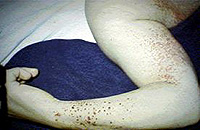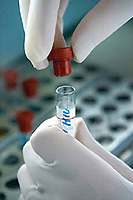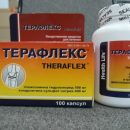Hemorrhagic fever with renal syndrome - not overseas illness, each can face it. What is this disease?
Content
The prevalence of fever
 Hemorrhagic fever with renal syndrome (GLPS) is found in many regions of Russia. The first description was made in 1935 in the Far East, then it turned out that it was distributed in Moscow, Tula, Yaroslavl, Samara, Tver regions,. The disease is characterized by selective damage to blood vessels of the kidneys.
Hemorrhagic fever with renal syndrome (GLPS) is found in many regions of Russia. The first description was made in 1935 in the Far East, then it turned out that it was distributed in Moscow, Tula, Yaroslavl, Samara, Tver regions,. The disease is characterized by selective damage to blood vessels of the kidneys.
The infection is caused by viruses of the genus of hantaviruses, their carriers are forest and field mice. The virus is highlighted in the environment with saliva and rodent feces, infection occurs when air inhaled, contaminated with particles of dried outskins of mice, and the food path of infection is possible - through products.
People are sufficiently susceptible to the disease, but for the surrounding sick person does not represent danger. Transferred infection leaves after himself persistent life immunity.
Development of hemorrhagic fever with renal syndrome (GLPS)
 The incubation period (the period from the causative agent of the disease to its first manifestations) is 7-46 days. The causative agent of hemorrhagic fever with renal syndrome (GLPS) is striking blood vessels. As a result, their permeability increases, plasma exit - a liquid part of blood - in the surrounding tissues. The blood itself is thickened, the work of its coagulation system is disturbed. The kidney vessels are more suffering, acute renal failure is developing, even kidney breaks. In addition, the general reactions of the body for the invasion of the virus are characteristic of the virus - high temperature (fever), intoxication and others.
The incubation period (the period from the causative agent of the disease to its first manifestations) is 7-46 days. The causative agent of hemorrhagic fever with renal syndrome (GLPS) is striking blood vessels. As a result, their permeability increases, plasma exit - a liquid part of blood - in the surrounding tissues. The blood itself is thickened, the work of its coagulation system is disturbed. The kidney vessels are more suffering, acute renal failure is developing, even kidney breaks. In addition, the general reactions of the body for the invasion of the virus are characteristic of the virus - high temperature (fever), intoxication and others.
The disease usually begins suddenly, with sharp and intense headaches mainly in the headless and temporal areas. At the same time - for several hours - body temperature increases. It quickly reaches 38-40°WITH. By the end of the first day, many patients noted a decrease in visual acuity. It is also noted nausea that gives up to vomit often appears in IKOT.
The temperature is held for 3-5 days, then gradually decreases, but the patient's condition does not improve, but on the contrary. At this time, the renal syndrome develops, characterized by pain in the lumbar region and the abdomen, a decrease in the amount of urine released, in difficult cases is possible anourcing (complete absence of urine).
By the end of the second week, vomiting sickness ceases, the pains in the lower back and the abdomen disappear, the amount of daily urine can reach 5 or more liters. The transition during the recovery period is usually noted by the 4th week of the disease.
How to learn hemorrhagic fever with renal syndrome (GLPS)
In the first period of the disease, recognize hemorrhagic fever with renal syndrome (GLPS) is difficult. From sharp respiratory diseases, it can be distinguished by the absence of a runny hubber, cough and other symptoms of the respiratory tract, and from intestinal infections - late appearance of abdominal pain and vomiting, which are only enhanced with the course of illness.
The main diagnostic feature is a sharp decrease in the amount of urine and the deterioration of the patient after the normalization of body temperature. Laboratory confirmation of the diagnosis of hemorrhagic fever with renal syndrome (GLPS).
Fighting hemorrhagic fever with renal syndrome (GLPS)
Treatment is carried out under an infectious department. Appointed anti-inflammatory treatment, normalization of urine release. Preparations reinforcing kidney defeat.
How to protect yourself
It comes down to measures to protect against rodents when in nature. So, the grass should be avoided, and the food reserves must be stored in unavailable places and containers.









